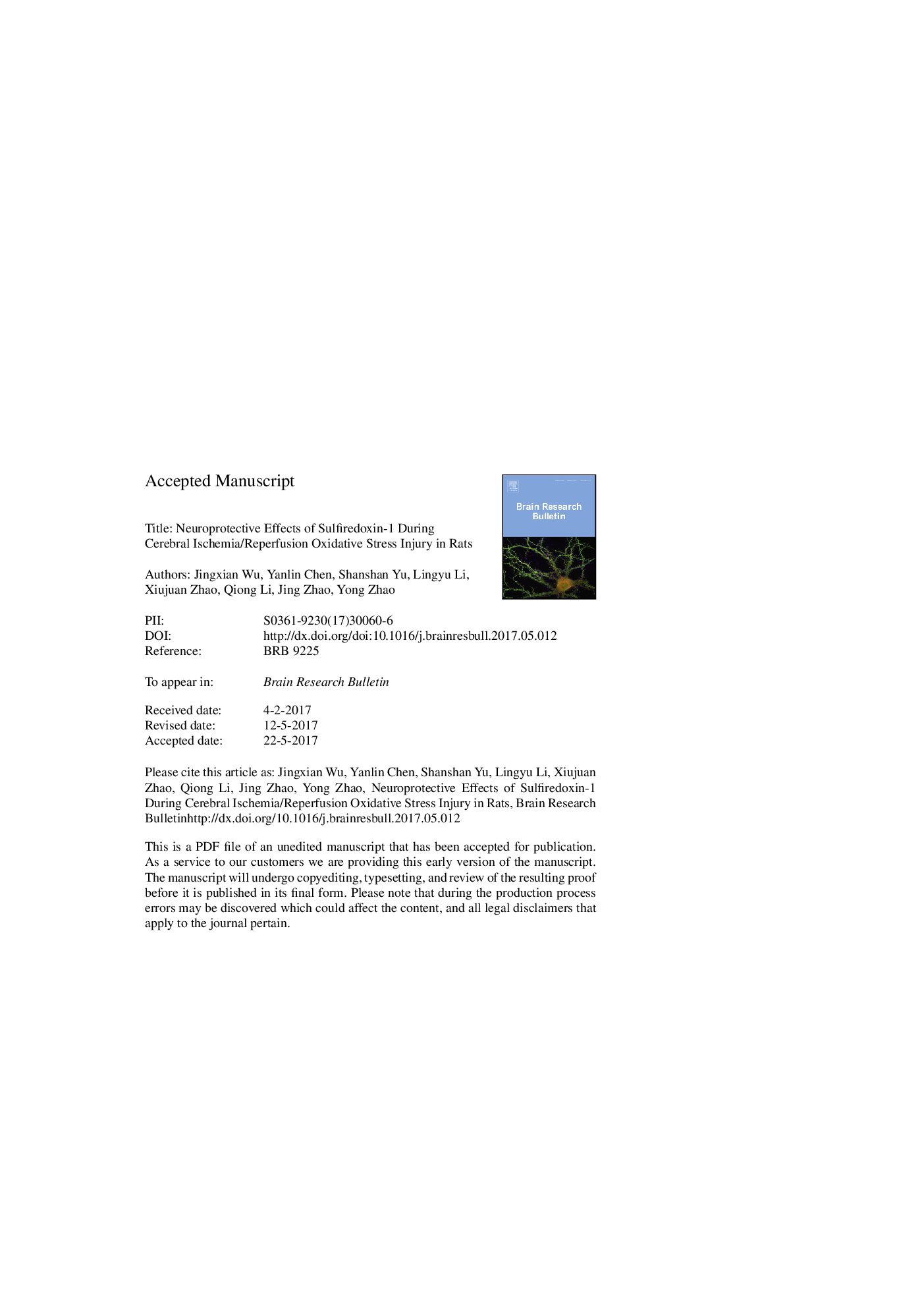| کد مقاله | کد نشریه | سال انتشار | مقاله انگلیسی | نسخه تمام متن |
|---|---|---|---|---|
| 5736404 | 1613225 | 2017 | 34 صفحه PDF | دانلود رایگان |
عنوان انگلیسی مقاله ISI
Neuroprotective effects of sulfiredoxin-1 during cerebral ischemia/reperfusion oxidative stress injury in rats
ترجمه فارسی عنوان
اثرات نوروپروتئوس سولفیردوکسین-1 در اثر آسیب استرس اکسیداتیو ایسکمی مغز / مجدد رپرفیوژن در موش صحرایی
دانلود مقاله + سفارش ترجمه
دانلود مقاله ISI انگلیسی
رایگان برای ایرانیان
کلمات کلیدی
سولفورد دوکسین 1، پروکسیریدوکسین، ایسکمی / رپرفیوژن، محافظت از عصب استرس اکسیداتیو،
موضوعات مرتبط
علوم زیستی و بیوفناوری
علم عصب شناسی
علوم اعصاب سلولی و مولکولی
چکیده انگلیسی
As an endogenous antioxidant protein, Sulfiredoxin1 (Srxn1) can prevent cell oxidative stress damage. However, its role in cerebral ischemia/reperfusion (I/R) injury and the underlying signaling mechanisms remain largely unknown. Here, we explored effects of Srxn1 knockdown on oxidative stress using in vitro and in vivo I/R models and investigated related neuroprotective mechanisms. For in vitro studies, primary cortical neuronal cultures were transfected with an interfering lentivirus targeting Srxn1. Oxygen-glucose deprivation (OGD) was conducted after Srxn1 knockdown. MTS and lactate dehydrogenase assays indicated that knockdown of Srxn1 increased cell death and reduced cell viability. Similarly, superoxide dismutase (SOD) and reduced glutathionekits assays showed that knockdown of Srxn1 worsened oxidative stress injury. For in vivo studies, siRNA for Srxn1 or negative control siRNA was injected intracerebroventricularly 24Â h before middle cerebral artery occlusion (MCAO). Data shows silencing Srxn1 resulted in a significant increase in cerebral infarction, neurological deficits, histological injury, and oxidative stress injury 24Â h after ischemic stroke. Moreover, immunoblot analysis assessed the relationship between Srxn1 levels and Prdx1-4 as well as Prdx-SO3 activity both in vitro and in vivo models. We found that decreased Srxn1 reduced Prdx1-4 and enhanced Prdx-SO3 protein levels. In addition, knockdown of Nrf2 was performed; immunoblot analysis was used to measure Srxn1 and NQO1 protein levels. We further found that interference of Nrf2 reduced Srxn1 and NQO1 protein levels. In summary, Srxn1 can protect neurons from I/R oxidative stress injury and the mechanism involves Prdx activity. Srxn1, which might be downstream of Nrf2, can prevent cerebral ischemia reperfusion by reversing overoxidized Prdx and restoring antioxidant activity of Prdx.
ناشر
Database: Elsevier - ScienceDirect (ساینس دایرکت)
Journal: Brain Research Bulletin - Volume 132, June 2017, Pages 99-108
Journal: Brain Research Bulletin - Volume 132, June 2017, Pages 99-108
نویسندگان
Jingxian Wu, Yanlin Chen, Shanshan Yu, Lingyu Li, Xiujuan Zhao, Qiong Li, Jing Zhao, Yong Zhao,
